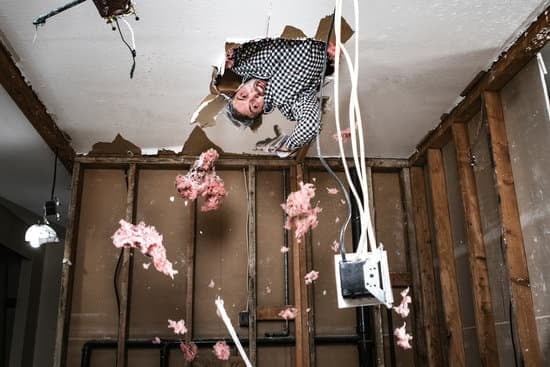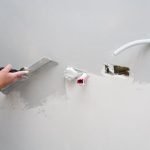Is home improvement returning in the wake of recent events? The home improvement industry has seen a significant shift in trends and practices, influenced by various factors such as the global pandemic and economic recovery. In this article, we delve into the current landscape of the home improvement sector, analyzing its trajectory and exploring emerging trends that are shaping the industry.
The Impact of COVID-19 has been profound on the home improvement sector, with lockdowns and restrictions affecting construction projects and supply chains. As homeowners spent more time indoors, there was a surge in DIY projects and renovations aimed at creating functional and comfortable living spaces. The pandemic highlighted the importance of home environments, leading to a renewed interest in improving living spaces.
As economic recovery takes center stage, there is a correlation between economic growth and home improvement projects. With more people investing in their homes as a safe haven during uncertain times, the industry is experiencing a resurgence. Homeowners are seeking innovative designs and sustainable solutions for their renovation projects, reflecting a growing awareness of eco-friendly practices in home improvement.
The Impact of COVID-19 on Home Improvement
When the COVID-19 pandemic hit, it caused a significant disruption in various industries, and home improvement was no exception. The restrictions and lockdown measures implemented to curb the spread of the virus led to a temporary slowdown in the sector.
Many homeowners were hesitant to undertake renovation projects due to uncertainties surrounding their financial stability and health concerns. As a result, businesses in the home improvement industry faced challenges such as supply chain disruptions, project cancellations, and reduced demand for their services.
Shift Towards Home Office Spaces
One noticeable trend that emerged during the pandemic was the increased focus on creating functional home office spaces. With remote work becoming more prevalent, many homeowners sought to upgrade their living areas to accommodate work-from-home setups.
This shift led to a surge in demand for renovations that catered to creating conducive work environments within residential properties. As individuals spent more time at home due to lockdowns and social distancing measures, they began looking at ways to optimize their living spaces for both comfort and productivity.
Rise in Outdoor Living Projects
Another effect of the pandemic on the home improvement industry was the rise in outdoor living projects. With travel restrictions in place and limited options for recreational activities outside of the home, homeowners turned their attention towards enhancing their outdoor spaces. This resulted in increased interest in landscaping, patio upgrades, outdoor kitchens, and other backyard improvements.
People realized the importance of having a comfortable and enjoyable outdoor area where they could relax and entertain while adhering to safety guidelines during the pandemic. This shift towards improving outdoor living spaces is indicative of how individuals adapted their homes to meet changing needs and lifestyles brought about by COVID-19.
Despite facing challenges during the peak of the pandemic, it is evident that there has been a resurgence in home improvement projects as communities reopen and economic conditions improve. The lessons learned from spending more time at home have motivated individuals to invest in upgrading their living spaces for both practicality and enjoyment purposes.
As people continue to prioritize comfort, functionality, and sustainability in their homes post-COVID-19 era, it is expected that this renewed interest in home improvement will contribute to the industry’s growth moving forward.
Economic Recovery and Home Improvement
With the gradual economic recovery following the impact of COVID-19, the home improvement industry is witnessing a notable resurgence. As individuals and families spend more time at home, there is an increased focus on creating comfortable and functional living spaces through renovation projects. The correlation between economic growth and home improvement projects is becoming more evident as consumer confidence rises and disposable incomes stabilize. This trend indicates a positive outlook for the industry in the coming months.
One key factor driving the uptick in home improvement projects is the low-interest rates prevalent in the current economic climate. With borrowing costs at historic lows, homeowners are more inclined to invest in renovation activities to enhance their living environments.
Additionally, as property values continue to rise in many regions, homeowners see renovations as a means of increasing the value of their homes while also improving their quality of life. This dual benefit contributes to the growing momentum in the home improvement sector.
Moreover, government stimulus initiatives aimed at boosting economic recovery are also playing a role in supporting home improvement endeavors. Tax incentives and grants for energy-efficient upgrades or renovations promote sustainable practices within the industry.
As sustainability becomes an increasingly important aspect of home improvement projects, these financial incentives further encourage homeowners to invest in eco-friendly solutions. The combination of economic factors and environmental considerations is shaping a new era of conscientious home improvement practices that prioritize long-term benefits for both homeowners and the environment.
| Key Factor | Impact |
|---|---|
| Low-Interest Rates | Inclination for homeowners to invest in renovations |
| Rising Property Values | Incentive to increase home value through renovations |
| Government Stimulus Initiatives | Promotion of sustainability and eco-friendly upgrades |
Emerging Trends in Home Improvement
The home improvement industry is constantly evolving, with new trends and innovations emerging to meet the changing needs and preferences of homeowners. As the world adapts to the challenges posed by the COVID-19 pandemic, the focus on creating comfortable and functional living spaces has never been more important. Let’s take a look at some of the latest trends shaping the home improvement industry:
- Smart Home Technology: With the rise of smart devices and home automation systems, more homeowners are incorporating high-tech solutions into their homes. From smart thermostats and lighting to security cameras and voice-controlled assistants, technology is revolutionizing how we interact with our living spaces.
- Outdoor Living Spaces: The trend towards creating outdoor retreats continues to gain popularity, especially in light of social distancing measures. Homeowners are investing in outdoor kitchens, fire pits, pergolas, and other amenities that allow them to enjoy nature from the comfort of their own backyard.
- Sustainable Materials: As environmental awareness grows, so does the demand for eco-friendly and sustainable building materials. From bamboo flooring to recycled glass countertops, homeowners are increasingly choosing products that minimize their carbon footprint.
These emerging trends reflect a shift towards personalized and sustainable home improvement solutions that prioritize both style and functionality. Whether it’s incorporating smart technology into everyday living or creating an outdoor oasis for relaxation, homeowners are embracing innovative designs to enhance their homes. As we navigate through these uncertain times, one thing is clear – the home improvement industry is resilient and continuously adapting to meet the evolving needs of consumers.
Sustainable Home Improvement
As the world becomes more conscious of the impact of climate change and environmental degradation, sustainable home improvement practices have gained significant traction in the industry. Homeowners are increasingly looking for ways to reduce their carbon footprint and make environmentally-friendly choices when it comes to renovating their homes. From energy-efficient appliances to eco-friendly building materials, the focus on sustainability in home improvement is at an all-time high.
One key trend in sustainable home improvement is the rise of smart technology and integrated systems that help homeowners monitor and optimize their energy consumption. From smart thermostats that regulate heating and cooling based on occupancy, to solar panels that harness renewable energy, these innovations not only reduce carbon emissions but also lead to long-term cost savings for homeowners.
The demand for sustainable solutions in home improvement is driving manufacturers and contractors to develop products and services that prioritize environmental impact.
According to a recent survey by the National Association of Home Builders (NAHB), over 80% of homebuyers consider energy-efficient features important when looking for a new home. This growing awareness of eco-friendly options is influencing not only new construction but also renovation projects.
Sustainable home improvements not only benefit the environment but also enhance the resale value of properties. As more homeowners realize the long-term benefits of investing in eco-friendly upgrades, sustainable home improvement is expected to remain a prominent trend in the industry for years to come.
| Sustainable Home Improvement | Key Points |
|---|---|
| Smart technology integration | Optimizing energy consumption |
| Growing demand for eco-friendly solutions | Enhancing property value |
DIY vs Professional Services
During the COVID-19 pandemic, many homeowners turned to do-it-yourself (DIY) home improvement projects as a way to stay occupied while spending more time at home. With restrictions on gatherings and concerns about health and safety, hiring professional contractors became less feasible for some individuals.
DIY projects ranged from small repairs and decor updates to larger renovation tasks like kitchen remodels or bathroom makeovers. One of the main factors driving this shift towards DIY was the desire to save money during uncertain economic times.
However, as we move towards economic recovery, there is a noticeable trend of homeowners reverting back to hiring professional services for their home improvement needs. Professional contractors bring expertise, experience, and the necessary tools to ensure that projects are completed efficiently and with high quality results.
While DIY projects can be cost-effective, they often require a significant time investment and may not always yield the desired outcome. Additionally, certain tasks like electrical work or plumbing should be left to professionals for safety reasons.
Another consideration when deciding between DIY and professional services is the scope of the project. Smaller tasks like painting a room or installing new light fixtures can typically be handled by homeowners themselves with proper research and guidance.
On the other hand, major renovations or structural changes are best left in the hands of professionals who have the skills and resources to tackle complex projects. Overall, striking a balance between cost savings and quality workmanship is essential when determining whether to take on a home improvement project yourself or hire a professional contractor.
Home Improvement ROI
When homeowners embark on home improvement projects, one of the key considerations is understanding the return on investment (ROI) for the renovations they undertake. This involves looking at how much value a particular renovation adds to the property compared to the cost of the project. Whether it’s a minor upgrade or a major renovation, determining the ROI can help homeowners make informed decisions about which projects to prioritize.
Popular Renovation Projects With High ROI
Certain renovation projects tend to offer a higher ROI than others. For example, kitchen remodels and bathroom renovations are often considered top choices for homeowners looking to increase their property value. These areas of the home are commonly used and can greatly impact potential buyers’ decision-making process. Other projects that typically yield a high ROI include adding a deck, improving curb appeal with landscaping, or upgrading windows for energy efficiency.
Factors Influencing ROI
Several factors can influence the ROI of a home improvement project. The location of the property, current market conditions, quality of workmanship, and materials used all play a role in determining how much value a renovation adds to a home. It’s important for homeowners to carefully research and plan their projects to ensure they are making strategic investments that will yield positive returns in both monetary value and overall satisfaction with their living space.
Maximizing ROI Through Smart Renovation Choices
To maximize ROI on home improvement projects, homeowners should consider not only the potential increase in property value but also their own enjoyment and use of the renovated space. Combining practical upgrades with aesthetic appeal can create a winning combination that enhances both the functionality and beauty of the home.
Additionally, focusing on energy-efficient upgrades or sustainable materials can further add value to the property while reducing long-term costs. By making smart renovation choices that align with personal preferences and market trends, homeowners can optimize their return on investment when it comes time to sell or refinance their property.
Future Forecast
The future of the home improvement industry post-COVID-19 is a topic of great interest as the world gradually recovers from the impact of the pandemic. Experts and analysts have been closely monitoring the trends and developments in the industry to provide predictions for what lies ahead. Here are some key forecasts for the future of home improvement:
- Increased Demand for Outdoor Living Spaces: With more people spending time at home, there is a growing interest in creating outdoor living areas. This trend is expected to continue, with homeowners investing in features like patios, decks, outdoor kitchens, and landscaping.
- Focus on Health and Wellness: The pandemic has highlighted the importance of maintaining a healthy living environment. As a result, there will be an increased focus on incorporating elements that promote health and wellness into home renovation projects. This could include features like indoor air quality systems, natural lighting, and spaces designed for exercise and relaxation.
- Technological Advancements: Technology is playing an increasingly significant role in home improvement projects. From smart home systems to energy-efficient appliances, homeowners are looking for ways to make their homes more convenient, secure, and sustainable. The integration of technology is expected to continue shaping the industry in the coming years.
Overall, the outlook for the home improvement industry post-COVID-19 is optimistic. As more people prioritize their living spaces and invest in upgrades that enhance both comfort and functionality, it is clear that home improvement is indeed returning as a prominent industry. By staying attuned to emerging trends, sustainability efforts, and advancements in technology, homeowners can look forward to exciting possibilities in transforming their residences into modern havens of style and comfort.
Conclusion
In conclusion, the home improvement industry is showing strong signs of returning as a prominent sector in the post-COVID-19 era. Despite the initial slowdown caused by the pandemic, there has been a noticeable increase in home renovation projects as homeowners look to enhance their living spaces. This renewed interest in upgrading homes can be attributed to various factors such as spending more time indoors, increased focus on comfort and functionality, and the desire to increase property values.
The impact of COVID-19 served as a catalyst for many individuals to reevaluate their living spaces, leading to a surge in DIY projects and professional renovation services alike. As economic recovery continues, more homeowners are willing to invest in improving their properties, driving growth in the home improvement industry. The shift towards sustainable practices and energy-efficient designs is also contributing to the sector’s resurgence, with an increasing number of homeowners prioritizing eco-friendly renovations.
Looking ahead, the future of the home improvement industry seems promising with emerging trends like smart home technologies, versatile design solutions, and innovative materials shaping the landscape. Whether it’s updating kitchens and bathrooms or creating outdoor living spaces, homeowners are willing to invest in transforming their houses into personalized sanctuaries.
With a focus on quality craftsmanship, creativity, and sustainability, it is clear that home improvement is indeed making a comeback as a prominent industry with limitless possibilities for growth and innovation.
Frequently Asked Questions
Will Home Improvement Be Rebooted?
There have been rumors circulating about a possible Home Improvement reboot, but as of now, nothing concrete has been announced. Fans of the show would undoubtedly be thrilled to see the Taylors back on screen.
Is There a Spin Off of Home Improvement?
Yes, there is actually a spin-off of Home Improvement called “Last Man Standing.” Tim Allen stars in this show as well, playing the character Mike Baxter. While not a direct continuation of Home Improvement, it definitely appeals to fans of the original series.
Is Tim Allen Doing Another Show?
Tim Allen is indeed doing another show called “Assembly Required.” This reality TV series features Tim and Richard Karn working together once again, this time overseeing DIY projects rather than fictional home improvement challenges. Fans are excited to see them reunite on screen.

I’m thrilled to have you here as a part of the Remodeling Top community. This is where my journey as an architect and remodeling enthusiast intersects with your passion for transforming houses into dream homes.





